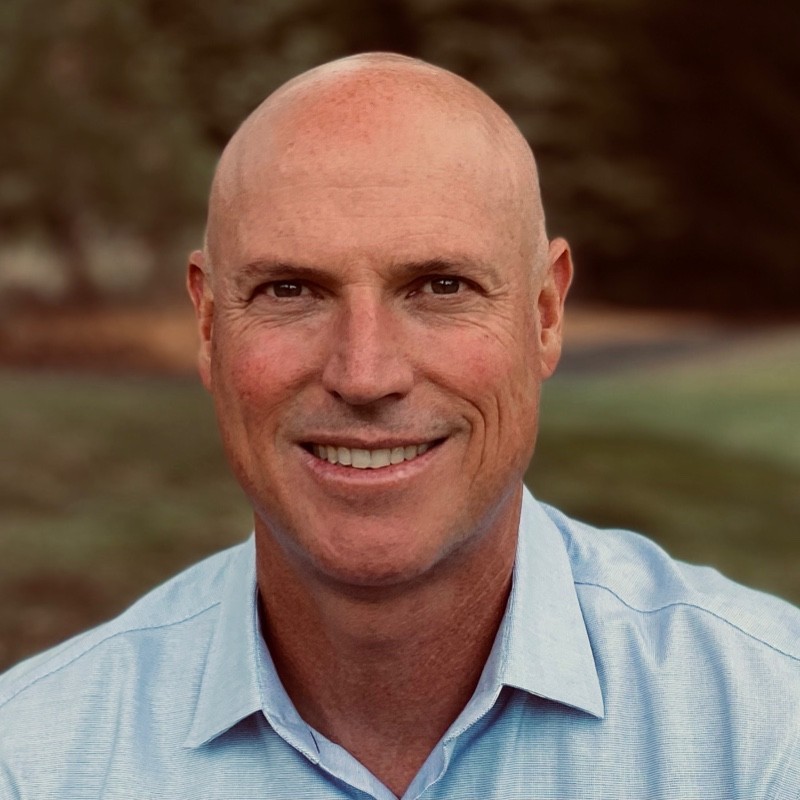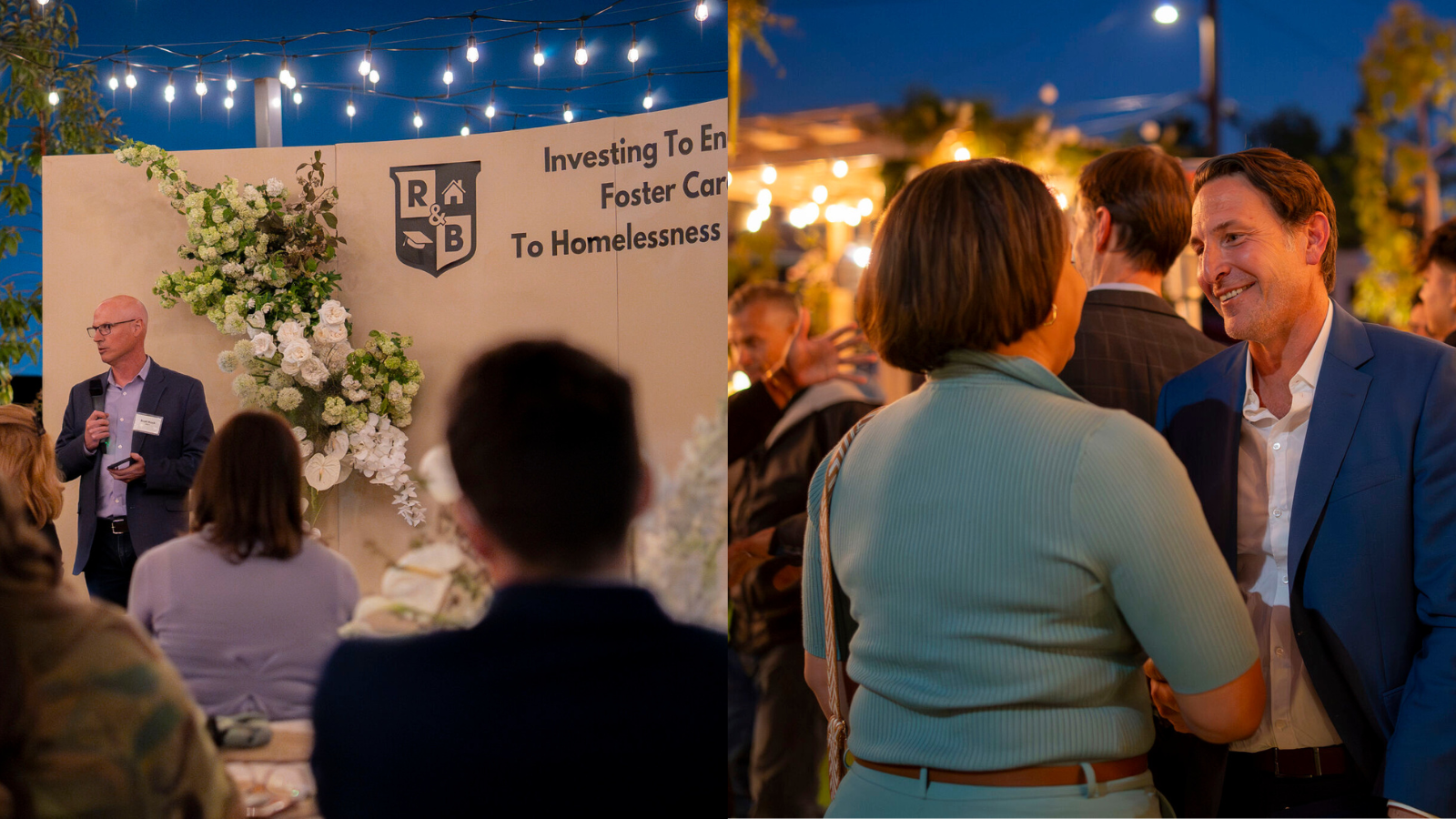Investing to End the Foster Care to Homelessness Pipeline
Fighting homelessness requires simultaneously taking people off the street, while preventing others from ever finding themselves unhoused.
In Los Angeles, the City, led by Mayor Karen Bass, and the County have made significant strides on the first part of that equation. The 2024 homelessness count found that the unsheltered population had dropped by 5% in the County, while the City had reduced street homelessness by 10%.
“The system in place for years is not outcome driven. Right now, everything is process based. We have to hit the ground running. People need to see a difference immediately. People will figure out how to fix the system along the way,” Mayor Bass said on-stage at the 2024 MIE National Conference in May.
Part of that “hitting the ground running” means both taking unhoused Angelinos off the street while also keeping those most prone to wind up homeless inside. To this end, local philanthropy, County and City officials, nonprofit service providers, advocates and most importantly - foster youth - have zeroed in on ending the pernicious and preventable foster care to homelessness pipeline.
L.A. County is home to the largest locally administered foster care system in the world, serving nearly 22,000 children and youth. Roughly 1,000 youth will “age out” of the foster care system in L.A. County every year without having been adopted or reunified with their birth families. More than 85% of the foster youth ages 18-21 in the County are Black or Latino - pointing to outsized racial disproportionality.
The seminal CalYOUTH study found that between ages 21 and 23, 25% of California foster youth surveyed experienced homelessness, with an additional 28% reporting that they had “couch surfed.” A report released by the California Policy Lab this summer mirrored these results, finding that 30% of County foster youth ages 23 and 24 were tagged as having experienced homelessness by the County Department of Social Services. And a survey conducted by the RAND Corporation, also this summer, found that youth with foster care involvement experiencing homelessness had worse outcomes than homeless youth who had not. When asked if they had been homeless for 36 months, 21% of youth who had experienced foster care said “yes,” 5% higher than the other homeless youth surveyed.
These are relatively new data but tell an old story. Understanding such persistent and dismaying outcomes, federal, state, and local policymakers have repeatedly acted: moving successive waves of legislation and administrative change that have resulted in significant public investments to support foster youths’ tender transitions to adulthood.
But something was forgotten during all this expansion of service and rental subsidies: a comprehensive plan to set aside housing for foster youth. In L.A., this means that foster youth themselves, and the nonprofits that lease housing on their behalf, are left to compete in a brutal housing market. Landlord stigma and discrimination against foster youth has too often meant that adequate subsidies don’t translate into safe, stable – or better – exceptional housing.
But that is changing, fast. In May of 2023, seven local funders supported a financial analysis that illustrated how existing subsidies could support significant private investment into foster youth housing.
In May 2024, during the Mission Investors Exchange National Conference, three of these funders —The Conrad N. Hilton Foundation, The Ralph M. Parsons Foundation and the Reissa Foundation — joined The Kresge Foundation in sponsoring a Dine Around that took impact investors and other stakeholders to one of the most exciting youth housing projects in Los Angeles: Los Angeles Room and Board’s (LARB) Dunamis House.
The site, in L.A.’s Boyle Heights neighborhood, was once a hostel for Japanese Americans leaving internment, but has since been transformed into housing for more than 50 transition-aged youth. The redesign was so artful that Elle Décor wrote it up.
Under glowing lights in Dunamis House’s backyard, state and local officials joined mission investors from across the country to meet foster youth, service providers and local grantmakers – and were given a window into private capital’s role in giving these young people a chance to thrive.
Key Takeaways from the MIE Dine Around:
In Los Angeles, the City, led by Mayor Karen Bass, and the County have made significant strides on the first part of that equation. The 2024 homelessness count found that the unsheltered population had dropped by 5% in the County, while the City had reduced street homelessness by 10%.
“The system in place for years is not outcome driven. Right now, everything is process based. We have to hit the ground running. People need to see a difference immediately. People will figure out how to fix the system along the way,” Mayor Bass said on-stage at the 2024 MIE National Conference in May.
Part of that “hitting the ground running” means both taking unhoused Angelinos off the street while also keeping those most prone to wind up homeless inside. To this end, local philanthropy, County and City officials, nonprofit service providers, advocates and most importantly - foster youth - have zeroed in on ending the pernicious and preventable foster care to homelessness pipeline.
L.A. County is home to the largest locally administered foster care system in the world, serving nearly 22,000 children and youth. Roughly 1,000 youth will “age out” of the foster care system in L.A. County every year without having been adopted or reunified with their birth families. More than 85% of the foster youth ages 18-21 in the County are Black or Latino - pointing to outsized racial disproportionality.
The seminal CalYOUTH study found that between ages 21 and 23, 25% of California foster youth surveyed experienced homelessness, with an additional 28% reporting that they had “couch surfed.” A report released by the California Policy Lab this summer mirrored these results, finding that 30% of County foster youth ages 23 and 24 were tagged as having experienced homelessness by the County Department of Social Services. And a survey conducted by the RAND Corporation, also this summer, found that youth with foster care involvement experiencing homelessness had worse outcomes than homeless youth who had not. When asked if they had been homeless for 36 months, 21% of youth who had experienced foster care said “yes,” 5% higher than the other homeless youth surveyed.
These are relatively new data but tell an old story. Understanding such persistent and dismaying outcomes, federal, state, and local policymakers have repeatedly acted: moving successive waves of legislation and administrative change that have resulted in significant public investments to support foster youths’ tender transitions to adulthood.
But something was forgotten during all this expansion of service and rental subsidies: a comprehensive plan to set aside housing for foster youth. In L.A., this means that foster youth themselves, and the nonprofits that lease housing on their behalf, are left to compete in a brutal housing market. Landlord stigma and discrimination against foster youth has too often meant that adequate subsidies don’t translate into safe, stable – or better – exceptional housing.
But that is changing, fast. In May of 2023, seven local funders supported a financial analysis that illustrated how existing subsidies could support significant private investment into foster youth housing.
In May 2024, during the Mission Investors Exchange National Conference, three of these funders —The Conrad N. Hilton Foundation, The Ralph M. Parsons Foundation and the Reissa Foundation — joined The Kresge Foundation in sponsoring a Dine Around that took impact investors and other stakeholders to one of the most exciting youth housing projects in Los Angeles: Los Angeles Room and Board’s (LARB) Dunamis House.
The site, in L.A.’s Boyle Heights neighborhood, was once a hostel for Japanese Americans leaving internment, but has since been transformed into housing for more than 50 transition-aged youth. The redesign was so artful that Elle Décor wrote it up.
Under glowing lights in Dunamis House’s backyard, state and local officials joined mission investors from across the country to meet foster youth, service providers and local grantmakers – and were given a window into private capital’s role in giving these young people a chance to thrive.
Key Takeaways from the MIE Dine Around:
-
Foster Youth Have Robust and Growing Government Support. In the summer of 2024, California Governor Gavin Newsom signed a state budget that will increase the rate that more than 1,000 L.A. County foster youth receive from $1,206 per month today to $2,228 in 2027. Young people use those dollars to rent housing independently. Backed by federal and state dollars, foster youth subsidies can support privately financed housing.
-
Service Providers Should be Property Owners. The site we visited, Dunamis House, is expertly managed by LARB. But most foster youth service providers are not owners, instead renting from private landlords. Putting service providers on a path to ownership will provide these agencies with cash flowing assets to augment support for young people.
-
Cross Sector Collaboration is Key. The stakeholders at the MIE Dine Around ranged from impact investors, County, City and State officials, advocates, service providers, and youth. While private capital has a role to play, L.A. County has the collaborative DNA to ensure that housing for foster youth translates into better outcomes. Notably, the County and philanthropy-backed Center for Strategic Partnerships is taking a lead role in forging public-private partnerships.
-
Synchronizing Philanthropy’s Financial Instruments. Philanthropic capital can come in many forms: grants, program related investments, mission related investments and endowment allocations. By titrating and synchronizing these capital sources, investors can achieve acceptable returns and provide exceptional housing and high-quality services for youth.
Pictured above: Scott Koch (left) and Daniel Heimpel (right) at the MIE Dine-Around at Dunamis House. Photo credit: Los Angeles Room and Board








